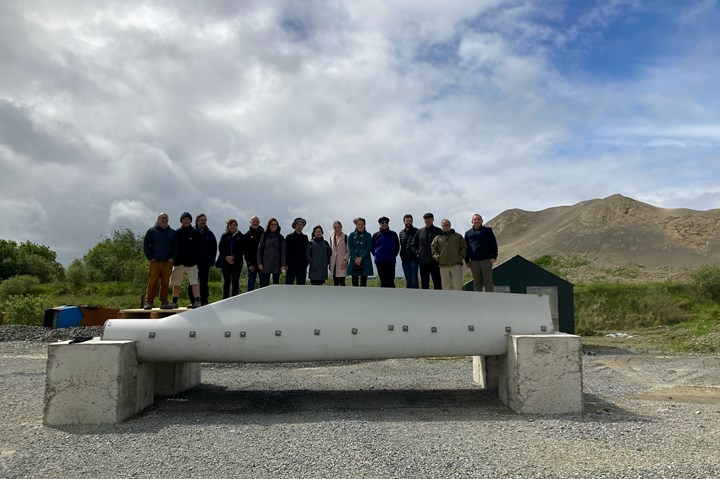Re-Wind Network constructs experimental pedestrian bridge using wind turbine blades
The 6-meter footbridge has been constructed using wind turbine blades as bridge girders after extensive materials and mechanical testing, with the intention of load testing it to failure.
Re-Wind Network team, including project members Conor Graham (QUB), Marios Soutsos, Kenny McDonald and Jennifer McKinley, visited the bridge in May, even testing it out for themselves. Photo Credit: Re-Wind Network
On May 25, the Re-Wind Network — comprising the University College Cork, Queens University Belfast, Georgia Tech and Munster Technological University (MTU) — visited the successfully completed 6-meter-long BladeBridge that is situated in a quarry in Draperstown, Magherafelt in Northern Ireland. This is the second pedestrian bridge built after the installation of a BladeBridge in Cork, Ireland in January 2022.
Like the first BladeBridge, this bridge was constructing using two repurposed LM 13.4 wind blades from Nordex (Rockstock, Germany) N29 turbines originally donated by Everun Ltd. (Belfast, Northern Ireland) for its main girders. It has a clear span of 6 meters and a 2-meter width. Approximately 50 centimeters of the blade rests on the concrete abutments on each side.
Prior to the final installation, extensive experimental testing, computational modeling and design work was required to ensure that the fiber-reinforced polymer (FRP) wind turbine blades were suitable for use as girders for a short-span pedestrian bridge. Out of a total of five blades donated by Everun, four were taken to the quarry and one was cut to 2-meter lengths and transported to the David Keir Building in Queen’s University Belfast.
As a wind turbine blade does not have a uniform cross section, extensive materials and mechanical testing, such as resin burnout tests (conducted in accordance with ASTM D2584 (ASTM 2011)) to determine how the material properties varied along the length of the blade, and mechanical testing in tension and compression were performed. This also involved LiDAR scanning the blade to create a digital twin—which included the thickness of the skin of the blade—and importing that digital twin into a finite element (FE) modeling software.
“We are grateful to our technical team in civil engineering and GIS team in geography at Queen’s University Belfast for all their hard work in making this BladeBridge a reality,” Professors Marios Soutsos and Jenny McKinley add.

















